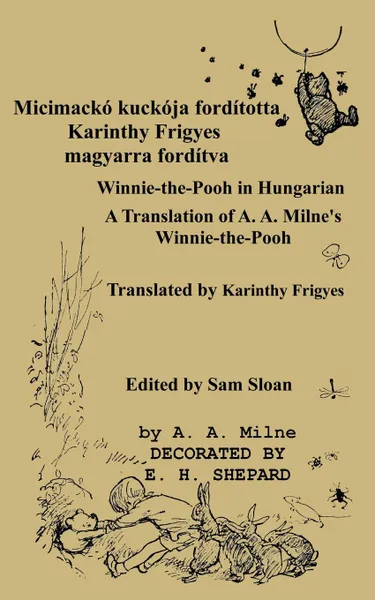MICIMACKO forditotta Karinthy Frigyes Winnie-the-Pooh translated into Hungarian by Karinthy Frigyes. A Translation of A. A. Milne.s Winnie-the-Pooh into Hungarian 12+
Автор: A. A. Milne,
Karinthy Frigyes
82 страницы
Категория: Учебная литература
ISBN: 9784871872560
Язык: Венгерский
📖 Winnie-the-Pooh is the most popular children's book in the world and in Hungary. Hungarian is a language read and spoken by eleven million people in Hungary and outside of Hungary. It is spoken by communities of Hungarian people in neighbouring countries, especially in Romania, Slovakia, Serbia and Croatia. There appear to be at least a million speakers of other closely related languages or dialects outside of Hungary. This translation of this book into Hungarian is by Karinthy Frigyes. Frigyes was born in Budapest on June 25 1887. He was the author and translator of many books. He died in Siófok, Hungary on August 29 1938. Hungarian has 44 letters including O Ó Ö Ő U Ú Ü Ű Hungarian is NOT an Indo-European Language. It is a Finno-Ugric Language or Uralic language. The other major languages in this group are Finnish and Estonian. There are pockets of minor languages still in Russia, including Karelian, Livvi, Ludic, Erzya, Moksha, Mari, Udmurt, and Komi, which are officially recognized languages in various regions of Russia. Some of these languages are far away, such as the languages of Khanty-Mansiysk of Khanty and Mansi which is in Central Siberia East of the Urals where the World Chess Championship matches have been played. These languages were required to be written in the Cyrillic alphabet during the Soviet times but many have now converted to the Roman alphabet. The Soviet Union took over many Finnish and Hungarian speaking areas. The question of how it came to be t...
Мнения
